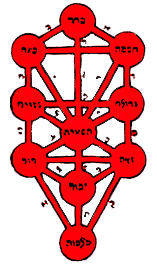|
The Real Da Vinci Code
The Holy Grail
The myth of the Holy Grail must be one of the most enduring of all human stories. Perhaps because we as individuals seek our own small version of that special but elusive Grail magic in our lives. In this sense, the Holy Grail might represent anything that we strive for, be it spiritual or material. And it would explain the enduring appeal of any Grail-type myth.
The legend has never died. And The Da Vinci Code by Dan Brown is simply the latest version to capture the public's imagination. But until fairly recently, those who sought the Holy Grail were in search of the cup that Jesus Christ shared with his disciples during The Last Supper. There have been myriad candidate cups, but none so far has stood the test of historical analysis.
Dan Brown's Holy Grail is a set of documents that apparently prove that the Merovingian dynasty of French Kings were descended from the union of Jesus Christ with Mary Magdalene. A bloodline that, if it were genuine, would be cataclysmic for the traditional Christian religions of the world.
Some, however, are persuaded that the offspring of Jesus and Mary are a serious possibility. Particularly the three authors of the 1982 bestseller
The Holy Blood and the Holy Grail. Their research led them to a secret society, linked to the ancient order of
The Knights Templar, called the
Priory of Sion– guardians of the Holy Grail. The Holy Grail | The Priory of Sion | The Knights Templar | Mary and Jesus | Leonardo da Vinci | Opus Dei | Find out more
|
 The first Grail legend was committed to paper by
Chretien de Troyes, a writer in 11th century France. He penned Le Conte du Graal, a story about a young knight, Percival, and his encounter with the Grail in the castle of the ailing
Fisher King. The legend is well known, although Chretien de Troyes didn't ever finish his tale. Nevertheless it was an extraordinary hit, and within three or four decades another five major Grail stories had appeared – an incredible number considering few people could read at the time.
The first Grail legend was committed to paper by
Chretien de Troyes, a writer in 11th century France. He penned Le Conte du Graal, a story about a young knight, Percival, and his encounter with the Grail in the castle of the ailing
Fisher King. The legend is well known, although Chretien de Troyes didn't ever finish his tale. Nevertheless it was an extraordinary hit, and within three or four decades another five major Grail stories had appeared – an incredible number considering few people could read at the time.